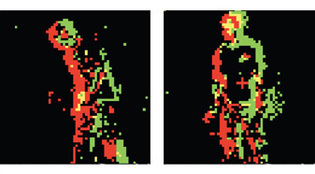 loading
loading
Findings. . . and how to get help fastA monitor that summons help automatically.  Eugenio CulurcielloView full imageA low-cost, non-intrusive monitoring system that sends a cell-phone alert when someone falls? The world may just beat a path to Eugenio Culurciello's door. "What's different about this system is that it can summon help automatically," says Culurciello, an engineering professor. "It doesn't require television cameras monitored by observers or a device that has buttons that must be pushed." Culurciello's device combines a high-speed camera and a microprocessor programmed to image the world as a collection of imprecise outlines (like those in the image above). Using students as models, the engineer and his team created an algorithm that enables the device to distinguish a human fall from, say, a person deliberately kneeling down, a box falling from a counter, or a cat leaping off a table. Once a fall has been detected, the device waits 30 seconds. If there's no movement during that time, it sends out an alert. The device, which has been tested in the laboratory but not in a nursing home or assisted-living situation, is described in an upcoming paper in IEEE Transactions on Biomedical Circuits and Systems. "This is not a 'Big Brother is watching you' application -- it doesn't violate anyone's privacy," Culurciello explains. "It's a system of watchful eyes to help seniors be safe in their daily routines."
The comment period has expired.
|
|